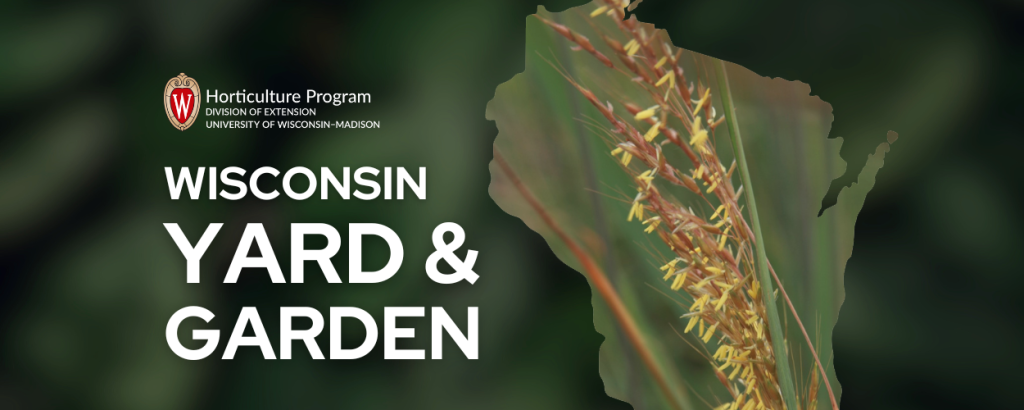
Ornamental grasses have surged in popularity among gardeners, as has using native plants in gardens and landscapes. Ornamental grasses that are native prairie species fit both criteria, and there are several species for Wisconsin gardeners to choose from.
As a group, ornamental grasses are popular for multiple reasons, starting with minimal maintenance requirements and few pest or disease problems. They have varied texture, color, and growth habits that provide multi-seasonal interest. Even in our recent bitter cold and wind, seedheads and foliage of ornamental grasses standing above the snow made positive contributions to the winter landscape.
True grasses belong to the Gramineae (Poaceae) family, further classified as either cool-season or warm-season. Cool season grasses readily grow and develop during cooler weather of spring and fall, while warm-season grasses flourish in the heat of summer. This is different from winter hardiness, which is identified by a USDA Hardiness Zone number. The lower the number, the colder the winter plants can tolerate. Most native prairie grasses, including all mentioned here, are warm-season grasses and are USDA Winter Hardiness Zone 3, thus can grow anywhere in Wisconsin.
Among the more popular native species are Little Bluestem and Big Bluestem. Little Bluestem (Schizachyrium scoparium) features erect clumps of medium-textured, arching foliage between 2 to 4 feet high, and reddish fall color. Like all warm-season grasses, it will flower in late summer and seedheads persist over winter. Big Bluestem (Andropogon gerardii) gets much taller, up to eight feet, and is known for distinct turkey-foot flowers in late summer and bronze fall color. Both species have short underground creeping stems called rhizomes, which allows plants to increase in size over time.
Switchgrass (Panicum virgatum) grows in erect clumps of medium-textured foliage between 3 to 6 feet tall and features open, airy flowers and seedheads. Several cultivars offer improved upright foliage or color, including ‘Rehbraun’ and ‘Rotstrahlbusch’ (reddish color), ‘Heavy Metal,’ ‘Northwind,’ and ‘Shenandoah.’ About the same height is Indian Grass (Sorghastrum nutans), which creeps via rhizomes with blue-green foliage turning bronze in fall. Attractive golden yellow flowers appear in late summer. Both ‘Sioux Blue’ and ‘Steel Blue’ are popular cultivars.
Two shorter (1 to 3 feet) native grasses that are excellent choices for Wisconsin landscapes are Side Oats Grama (Bouteloua curtipendula) and Prairie Dropseed (Sporobolus heterolepis). Side Oats Grama has arching, fine textured light green foliage and unique flowers on narrow, erect stalks with single rows of florets. Prairie Dropseed features fine textured foliage, flowers, and seedheads.
These are among the native grasses to consider adding to your landscape in 2025. All prefer sunlight for at least 6 hours per day.

About the Author
Bruce Spangenberg is a Horticulture Outreach Specialist with UW-Madison Division of Extension. Get answers to your lawn, landscape and garden questions anytime at “Ask Your Gardening Question.”




